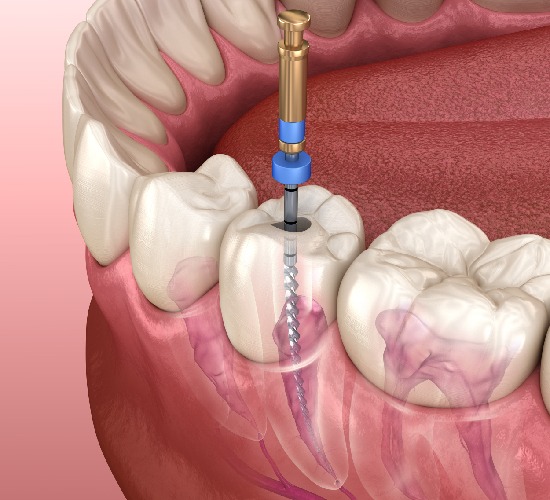Repeat RCT
Repeat RCT

A root canal therapy can last for several years. But there could come a point in the lifetime of the RCT that the tooth does not heal and can become diseased and painful. The occurrence of degradation can be in months or even years. The tooth may even develop new problems. Root canal failures are indicative of re-treatment. The presence of pain and swelling in most cases can be treated successfully with both methods non-surgical endodontic re-RCT and surgical endodontic re-RCT. A retreatment entails removal of the tooth, the fillings and elimination of infection after a thorough examination of the canals. The tooth is once again, cleaned and shaped and new, temporary fillings are placed. Once healed, the crown is fitted on the top to protect the tooth. Better concepts, advanced techniques, and high levels of education have improved the quality of restorations.
Fiber-optic lighting systems, headlamps for better visualization, ultrasonic devices to painlessly and noiselessly remove the old root canal and repairing it and better medicaments for disinfection and filling have made re-RCTs much easier.
Types of Re-RCT
Surgical endodontic RCT:
- The procedure is done under local anesthesia
- Flap adjacent to the affected tooth is raised
- Entry is gained into the infection to expose it
- Curettage is performed where the diseased and infected tissue is removed by scooping
- The granuloma is separated from the bone
- An apicoectomy procedure removes the infected root portion and the tip of the root
- The healthy part of the tooth is sealed at the tooth root with the help of a filling
- The infection is eliminated completely
Re-RCT microscopic endodontics
Receded pulp tissues are so tiny that they are not visible to the naked eye. In such cases, a powerful surgical operating microscope is used to magnify the area for better visualization and accurate treatments.
Re-RCT with laser
Stubborn debris is melted away with the help of a parallel beam of high-intensity light that cleanses the inner canals. Infection and bacteria are removed from the root thoroughly.
Non-surgical endodontic RCT
The non-surgical endodontic RCT is one of the safest procedures that can be conducted on the endodontically failed tooth. Non-surgical endodontic RCT is done as follows:
- The earlier undetected canals are located
- Prior filled material is removed from the root canal space
- Broken instruments if any are removed from the pulp
- The quality of root canal since previous is visibly improved
- All mechanical and pathological perforations that are present are treated
- The root canal space is then cleaned, re-shaped to achieve complete disinfection and sealed
- For functionality and aesthetics, a protective restoration may be placed
Dental Solutions performs highly successful retreatments of the root canal. More often two sittings may be required for the re-RCT, first for the removal of the debris and treating the tooth and the second for the placement of the crown. The patient is provided with a post-surgical treatment schedule and plan that has to be followed stringently.

